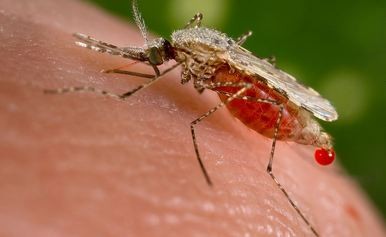Researchers at Monash University in Melbourne and the University of Melbourne have developed a faster and cheaper test that uses infrared light to detect malaria in its early stages.
The test looks for fatty acids (which are a marker for malaria) in the parasite that causes malaria using a technique called Attenuated Total Reflection-Fourier Transform Infrared Spectroscopy (ATR-FTIR). This technique relies on infrared light to detect the vibrations of molecules to give a "picture" of the entire chemistry of the system being investigated.
It's the first time the ATR-FTIR has been used to test for malaria. Using infrared light means that scientists can look for the malaria parasite at an earlier stage. It also allows scientists to determine the number of parasites in the blood.
The new test is the first to make it possible to detect the early stages of the parasite's life cycle, which is known as the ring stage and the gametocyte stage.
The journal Analytical Chemistry hailed the research by Monash University and the University of Melbourne as a breakthrough. The infrared test could also be a game changer in developing countries in Africa and Asia that are plagued by malaria.
Associate Professor Bayden Wood from Monash University, the Lead Researcher, noted that current tests for malaria suffer from serious limitations. Many existing tests are expensive; need specialist instruments and the services of a highly trained staff to determine if blood samples contain the malaria parasite.
"These are big hurdles given that the disease is rampant in developing nations," Wood said.
"What's been holding us back is the lack of an accurate and inexpensive test to detect malaria early and stop it in its tracks. We believe we've found it."
Wood said the test gives clear results within minutes and also gives a clear indication of malaria at a much earlier stage of infection than current tests on the market.
"The big advantage of our test is that it doesn't need scientists and expensive equipment. This has the potential to dramatically reduce the number of people dying from this disease in remote communities," Wood said.
Professor Leann Tilley from the University of Melbourne explained that malaria is tough to diagnose since only small numbers of immature parasites are present in the blood stream. And once they mature, these parasites hide in the tissues.
"It is important to make an early diagnosis before the parasites lodge in brain capillaries causing complications that can lead to death," Professor Tilley said.
Malaria affects around 300 million people worldwide. Of this total, over one million die from the disease every year.



























